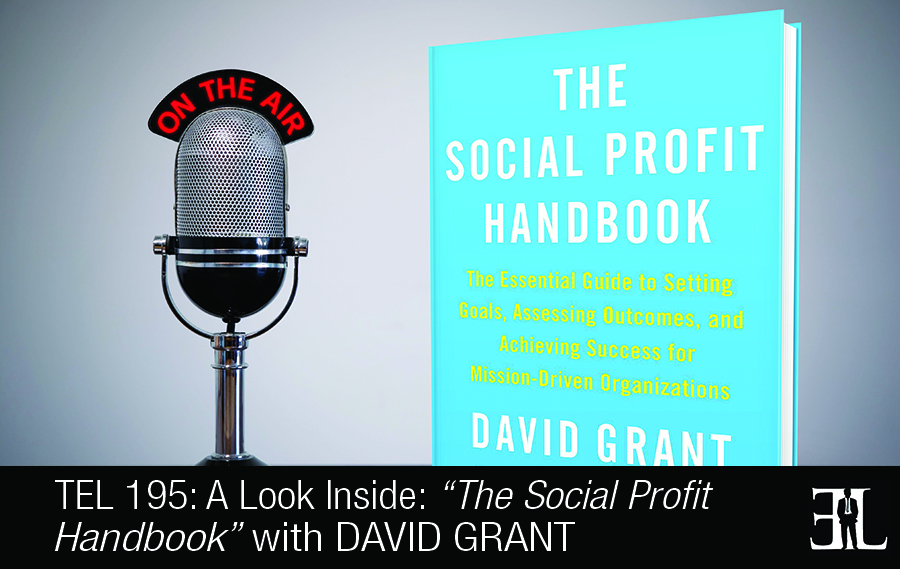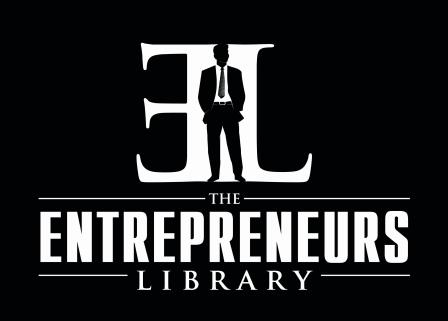A Preview of The Social Profit Handbook with David Grant

A summary of things you should know about The Social Profit Handbook according to David Grant:
Introduction
In this episode David Grant takes a deep dive into his book, The Social Profit Handbook, where he shares a guide to setting goals, assessing outcomes, and achieving success for mission-driven organizations.
In his book Grant provides proven, actionable strategies that help low-profit and non-profit organizations take charge of their operations in order to improve their future. The goal of the book is to teach you how to create assessment rubrics, develop a solid social business plan, properly measure your success, and effectively set attainable goals.
This book is perfect for entrepreneurs who are in the business of creating social change and want to know what it takes to create an efficiently run mission-based organization.
The Book’s Unique Quality (3:02)
I think the book is quite different in that it’s written by somebody who actually doesn’t care that much about the science of measurement. I have great respect for people who do but I am much more interested in the whole idea of assessment as a tool than I am as an end in itself. My whole interest is not in measurement but in what is being measured and that is to say in this case social profit. The world is full of people chasing financial profit and the world needs more people who are interested in social profit.
The Best Way To Engage (4:49)
I wrote it to be read from front to back.
The Reader’s Takeaway (15:43)
I think my phrase would be the power of rubric writing in mission time.
A Deep Dive Into The Book (5:32)
I spend the introduction and chapter one asking the question if this is worth your time. I am trying to let people know that this is a book about questions of assessment but I’ve got a bigger purpose in mind and that is the social profit that the world needs.
Chapters two, three, and four are about mindset and assumptions. I think if we start thinking differently about assessment and have different practices we will not only create more social profit but also be happier in our workplace. Chapter two is about measurement itself. We live in an age of metrics and we live in an age of outcomes measurement and people are constantly asking for numbers but we know that not everything yields itself to numbers. I suggest that we should open ourselves to quantitative measure and if we don’t have a standard measure for something we actually have to create it.
Chapter four is called Mission Time which is a key idea in the book that is based on my twelve years of running the Geraldine R. Dodge Foundation where I time and again talked to leaders in the social sector and none of them took enough time with colleagues to reflect on how they were doing. I make the case of mission time and building an end an organization and thereby really changing the culture of the place.
All of that leads me to chapter five which is the central chapter of the book and it’s called The Art of the Rubric. The rubric is a qualitative assessment tool; it’s everywhere in education and hardly anywhere in the social sector. It’s a matrix where down one side you have criteria for success and along the other side you’ve got levels of performance in relation to those criteria. It’s infinitely expandable and it gives you time to use words as well as numbers to describe what success looks like at these different levels. This chapter is part of a workshop that I have given for years about how to think about rubric and how to design them. By the time you are at the end of this chapter it is my hope that you are fired up to start working with your colleagues on writing some rubrics.
Chapter six is practical advice on rubric design and I shift from teacher to coach in this chapter because I know the problems you are going to bump in to.
Chapters seven, eight, and nine are examples of organizations that have gotten together, sat around a table, and used rubrics to create qualitative assessment tools that have changed their work. I start with individual organizations that are kind of small and by the time I’m in chapter nine I am describing entire systems where people all over the country have come together to write rubrics.
The last chapter is called Changing Our Minds and Cultures and it asks the question of what gets in the way of this work. You can have the best ideas in the world but you can’t actually bring them to life unless you create an atmosphere in the workplace where people can come together with clarity about what it is they do, what they don’t do, what they value, and what success would look like.
NOTE: That was just a summary. To get the full deep dive, play the audio clip at 05:32
Notable Quotes From The Book (17:01)
“The first value of the rubric was that it pushed us to think more clearly and more deeply about what we were trying to accomplish.” – Unknown
The Credibility/Inspiration Of The Author (0:38)
I have had a career split between two fields, the first half was in education and I was an English teacher. Then I had the opportunity to start and found a school in Vermont called The Mountain School which was the first of the whole series of semester plans which now exist around the country. From there I became president of the Geraldine R. Dodge Foundation in New Jersey.
When I came in to the foundation world I leaning towards the question who needs to learn what here. I ended up working very closely with the executive directors and the board chairs of the nonprofit organizations that the Dodge Foundation funded. What started with a couple afternoon sessions became a full blown course in leadership. The real incentive to write the book was that after these workshops, time and again, people told me that I had to write a book.
Other Books Recommended By The Author (18:54)
All the King’s Men by Robert Penn Warren
More Information About This Book and The Author
Buy The Social Profit Handbook by David Grant on Amazon today
Visit SocialProfitHandbook.com to learn more about the book
Follow David Grant on LinkedIn
More Information About This Episode
Download the full transcript here (coming soon)
Listen on iTunes, Stitcher , and SoundCloud
What did you like and not like about this episode? Fill out this one minute survey here.
What do you think about David Grant’s book, The Social Profit Handbook? Share your review in the comments below:
-
http://www.blogengage.com/ Brian Belfitt
 The Entrepreneurs Library
The Entrepreneurs Library














